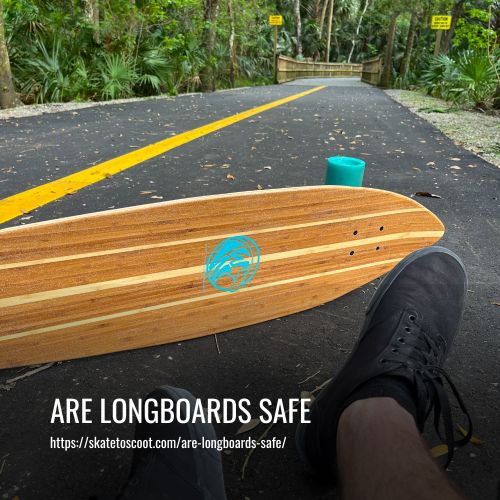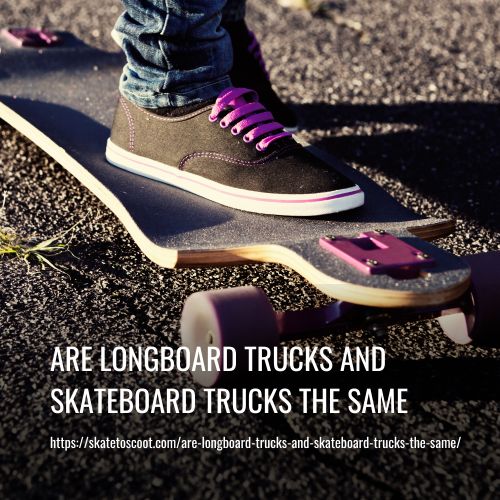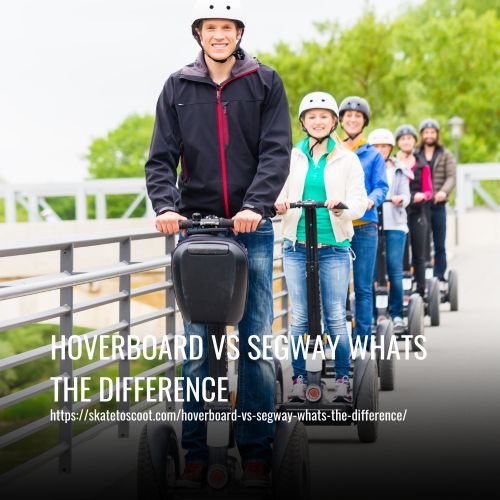As an Amazon Associate we earn from qualifying purchases.
Longboards can be safe if used properly and with the appropriate safety gear. It is important to wear a helmet, knee pads, and elbow pads while riding a longboard to protect against injuries. Additionally, riders should be cautious of their surroundings, avoid riding in high-traffic areas, and follow traffic laws. Learning proper techniques and practicing balance and control can also contribute to a safer longboarding experience.

Which Is Safer Skateboard Or Longboard?
When it comes to safety, it’s important to consider the risks involved in different sports. Longboarding, compared to skateboarding, has a higher potential for severe injuries such as head fractures, traumatic brain injuries, and intracranial hemorrhages.
If you’re an adrenaline junkie and enjoy the thrill of longboarding, it’s crucial to take precautions and skate responsibly. Wearing protective gear is essential to minimize the chances of injuring yourself.
Additionally, obeying traffic laws and avoiding crowded pedestrian areas is crucial to ensure the safety of yourself and others. It’s important to be aware of your surroundings and not let complacency set in. If an accident does occur, seek medical attention promptly to address any injuries.
Tips for Longboarding Safely and Avoiding Injury
Longboarding is a thrilling activity that allows you to enjoy the outdoors and stay active. However, it’s important to prioritize safety to prevent injuries. Here are some essential tips to keep in mind while longboarding:
- Wear Protective Gear: Always wear a helmet, elbow pads, knee pads, and wrist guards. Ensure that your gear fits properly and is in good condition.
- Learn the Basics: Before hitting the streets, familiarize yourself with the fundamentals of longboarding. Learn how to turn, stop, and maneuver around obstacles to maintain control.
- Start Slow: It’s essential to start at a comfortable pace and gradually increase your speed as you gain confidence and skills. Avoid attempting tricks or going too fast right away.
- Stay Alert: Be constantly aware of your surroundings. Pay attention to traffic, pedestrians, and any potential obstacles that may come your way.
- Avoid Bad Weather: Riding in rain, snow, or icy conditions can greatly increase the risk of accidents. It’s best to avoid longboarding during unfavorable weather conditions.
- Don’t Ride Alone: It’s always safer to ride with a friend or group. If an accident occurs, having someone there to assist you can be crucial.
- Stick to the Streets: Sidewalks should be reserved for pedestrians. Stick to designated bike lanes or ride longboards on the streets, following traffic laws and signals.
- Obey Traffic Laws: Treat yourself as a vehicle while longboarding. Stop at stop signs, yield to pedestrians, and obey traffic laws to ensure your safety.
- Stay Sober: Never consume alcohol or drugs before riding a longboard. Impairment greatly increases the risk of accidents and hampers reaction times.
- Have Fun Responsibly: Longboarding is a fantastic way to have fun and stay active, but don’t forget to prioritize safety. Enjoy the ride, stay safe, and avoid compromising your well-being.
The Safety Gear You Need for Longboarding
Longboarding is a fun and popular activity, but safety should always be a top priority. To ensure your well-being while longboarding, it’s important to have the right safety gear. Here are the essentials:
- Helmet: Your head is the most vulnerable part of your body, so invest in a certified helmet that fits snugly to protect against any falls or impacts.
- Knee and Elbow Pads: Falls are bound to happen, and knee and elbow pads are crucial for protecting your joints from injuries. Look for comfortable pads that fit well.
- Gloves: Your hands are also at risk during a fall, so wearing gloves is important to protect them. Choose ones made of breathable material that fits securely.
- Longboard: Obviously, you’ll need a longboard to participate in this activity. Make sure to choose a board that suits your riding style and is the right size and shape for you.
- Shoes: Adequate foot protection and traction are crucial for safe longboarding. Look for comfortable shoes with good grip to enhance stability and prevent slipping.
By ensuring you have the proper safety gear before hitting the streets, you can confidently enjoy your longboarding experience while minimizing the risk of injury. Remember, safety first, and have fun responsibly!
Variety Longboarding In Safety
Variety Longboarding In Safety: When it comes to the world of longboarding, safety should always be a top priority. With a range of riding styles and techniques, it’s important to ensure that you have the right safety gear for the type of longboarding you’re planning to do.
Whether it’s cruising down flat ground, tackling steep hills, or performing tricks in skate parks, there are specific safety precautions and equipment to consider. From protective gear like helmets, knee and elbow pads, and gloves, to choosing the right longboard and wearing proper footwear, taking the necessary steps to prioritize safety will help reduce the risk of injuries.
Is cruising on a longboard safe?
Cruising on a longboard can be a safe activity if you plan to ride on flat ground or mild slopes in relaxed settings such as the beach or a park. Few people get injured while doing this kind of riding. However, there is a possibility of running into small obstacles like rocks or sidewalk cracks, which can cause falls.
If you are reasonably fit and alert, you may be able to run off the fall at low speeds. But in some cases, you may lose your balance and end up with minor road rash or bruises on your hands or elbows. Many experienced riders recommend wearing protective gear, especially wrist guards and knee/elbow pads, as a precaution against unexpected falls.
While there is an ongoing debate about wearing a helmet for cruising at low speeds, it is always better to be safe than sorry, as even a small pebble can cause you to trip off your board. Another safety tip for beach cruising is to loosen your longboard trucks slightly, making it easier to turn and avoid ground obstacles. Overall, taking necessary safety precautions can make cruising on a longboard a safe and enjoyable experience.
Is longboard dancing safe?
Longboard dancing is a relatively safe activity that involves walking and crossing feet on a long and flexible deck while rolling mostly on flat ground. Unlike downhill longboarding which can lead to severe injuries, longboard dancing is a skilled discipline that doesn’t involve high speeds.
The most common injuries associated with longboard dancing are muscle and ligament injuries, sprains, and strains around the feet, lower legs, and ankles. Since you’ll be spinning and twisting on your board, there is still a risk of falling off. Therefore, it is recommended to wear a helmet and some knee pads for added protection.
Is commuting / long-distance longboarding safe?
Commuting or long-distance longboarding can be safe if proper safety precautions are followed. One of the most important safety measures is wearing a helmet and protective pads to help prevent serious injuries in the event of a fall or collision.
In addition to personal protective gear, it is crucial to prioritize road safety. Mastering foot braking is essential for quick and reliable stops, allowing riders to react to unexpected situations. Staying in your designated lane makes you more predictable for car drivers, reducing the risk of accidents. If a bike lane is available, it should be utilized, but riders should still remain vigilant and prepared to stop at any time.
Respecting road signs and traffic lights, similar to driving a car, is crucial for the safety of both the rider and others. Riding against traffic should be avoided, and turns or straight movements should only be made where permitted. Making yourself visible at night, such as by using LEDs, further enhances safety.
Is freeride longboarding safe?
Freeride longboarding, a riding style focused on speed, can be both exhilarating and risky. Sliding and drifting at high speeds requires skill and control, as miscalculations or mistakes can result in falls and injuries. To ensure safety, it is crucial to wear certified helmets, such as CPSC for cycling or ASTM F1492 for skateboarding, along with knee and elbow pads. Slide gloves from reputable brands like Sector 9, Loaded, and Gravity are essential for hand protection during slides and drifts.
Acquiring the skill of rolling into and out of a fall can reduce the risk of injury, although it may be challenging to learn. Alternatively, sliding on kneepads and gloves by dropping on your hands and knees can be an effective way to stop.
While freeride longboarding can be safe with the right protective gear and skills, it is important to be aware of the inherent risks involved. Maintaining safety by practicing proper techniques and using appropriate protective equipment is essential to enjoy this thrilling riding style.
Is longboard downhill safe?
Downhill longboarding can be an exhilarating and fast-paced activity, but it also comes with its fair share of risks. Riders involved in this type of riding are often among the most safety-conscious in the longboarding community. To ensure safety while downhill longboarding, it is crucial to have the right protective gear.
Riders should invest in a full-face helmet, full-body leather, and back protection gear for serious sessions. Additionally, sturdy slide gloves are essential for hands-down sliding before tackling speed corners.
By equipping oneself with this type of protective equipment, the risk of injury is significantly reduced, potentially making downhill longboarding safer than casually commuting on a longboard without any protection. In organized racing events, roads are typically closed off, and emergency preparations are in place to ensure participants’ safety.
However, when speed riding among friends, it is important to have a spotter to provide warnings around blind corners, especially for right-hand corners where drifting into the oncoming left lane at speed is more likely.
The Benefits of Safely Riding a Longboard
- Increased stability: Longboards are wider and have bigger wheels compared to skateboards, providing greater stability. This stability makes it easier to avoid obstacles and maintain balance, reducing the risk of falls and injuries.
- Improved maneuverability: Longboards are designed to be more maneuverable than skateboards, allowing riders to navigate around obstacles more easily. This enhanced maneuverability helps to prevent accidents and contributes to safer riding experiences.
- Enhanced comfort: Longboards are built with comfort in mind. They offer a larger surface area for your feet, allowing for a more stable and comfortable ride. This additional comfort enables riders to stay on the board for longer periods, giving them more time to react to potential hazards.
- Greater durability: Longboards are designed to withstand more abuse than skateboards, making them more durable and less prone to breakage or malfunction. This durability reduces the chances of accidents caused by equipment failure, providing a safer riding experience.
How to Choose the Right Longboard for Safety
When it comes to longboarding, safety should always be your top priority. Choosing the right longboard for your needs can help you stay safe while you enjoy the ride. Here are some tips to help you choose the right longboard for safety.
Firstly, consider the size of the board. Longboards come in a variety of sizes, so it’s important to choose one that fits your body type and riding style. If you’re a beginner, look for a board that’s around 8-10 inches wide and 36-42 inches long. This site will provide you with enough stability and control while you learn the basics.
Secondly, look for quality construction. Make sure the board is made from quality materials like maple or bamboo. Avoid boards made from plastic or other cheap materials, as they won’t provide the same level of durability and performance.
Thirdly, choose the right wheels. The size and hardness of the wheels will affect your ride. If you’re a beginner, look for wheels that are around 65-75mm in diameter and 78a-80a in hardness. This will provide you with enough grip and control while you learn the basics.
Lastly, invest in safety gear. Make sure you have the right safety gear, such as a helmet, knee pads, and elbow pads. This will help protect you in case of a fall.
The Pros and Cons of Longboards vs. Skateboards
Longboards and skateboards are both popular forms of transportation and recreation, but they have their own unique advantages and disadvantages. Let’s take a look at the pros and cons of longboards vs. skateboards.
Pros of Longboards:
- Longboards are great for cruising and carving. Their longer and wider shape provides more stability and makes them easier to ride.
- Longboards have softer wheels, offering a smoother ride and better grip on the pavement.
- They are excellent for downhill riding due to their larger size and softer wheels, providing increased stability at higher speeds.
Cons of Longboards:
- Longboards are heavier and more difficult to carry around, which can be inconvenient.
- They also tend to be more expensive compared to skateboards, making them less suitable for those on a budget.
FAQs
No, skateboarding is generally considered harder than longboarding. Longboards are designed to be more stable and easier to ride. They have a wider deck and shorter wheels, which provide better balance and control. On the other hand, skateboarding can be more challenging due to its larger size and harder wheels.
Longboards serve two main purposes – cruising and transportation. They are perfect for street riding and offer a comfortable and maneuverable experience. The flexible trucks and soft wheels of longboards make them ideal for navigating rough surfaces and enjoying a smooth ride.
Speed wobbles, uncontrolled shaking or wobbling of the board at high speeds, can be dangerous and cause accidents. To reduce the chances of experiencing speed wobbles, ride at a safe and consistent speed. Practice proper braking and acceleration techniques. Regularly check your longboard for any damage that may affect its stability.
Yes, it is recommended to slightly bend your knees when longboarding. This posture helps maintain balance, absorb shocks, and enhance overall stability while cruising. Keeping your knees flexed also allows for better control over the board’s movements.
For beginners, it is advisable to start with a longboard that is the right size for you. Opt for a board that is at least 0.75″ (19mm) wide and 12-14″ (30-40mm) long. This site provides a stable and user-friendly platform for learning and getting comfortable with longboarding.
Conclusion:
While there are inherent risks with any sport or activity, when it comes to longboarding, safety is all about preparation, caution, and responsible riding. By wearing protective gear, choosing appropriate locations, and practicing good technique, you can minimize the chance of accidents and enjoy the thrill of longboarding with peace of mind.
So, grab your board, hit the streets, and ride on, knowing that with the right precautions, longboarding can be a safe and exhilarating experience. Stay safe and keep shredding!
Amazon and the Amazon logo are trademarks of Amazon.com, Inc, or its affiliates.



